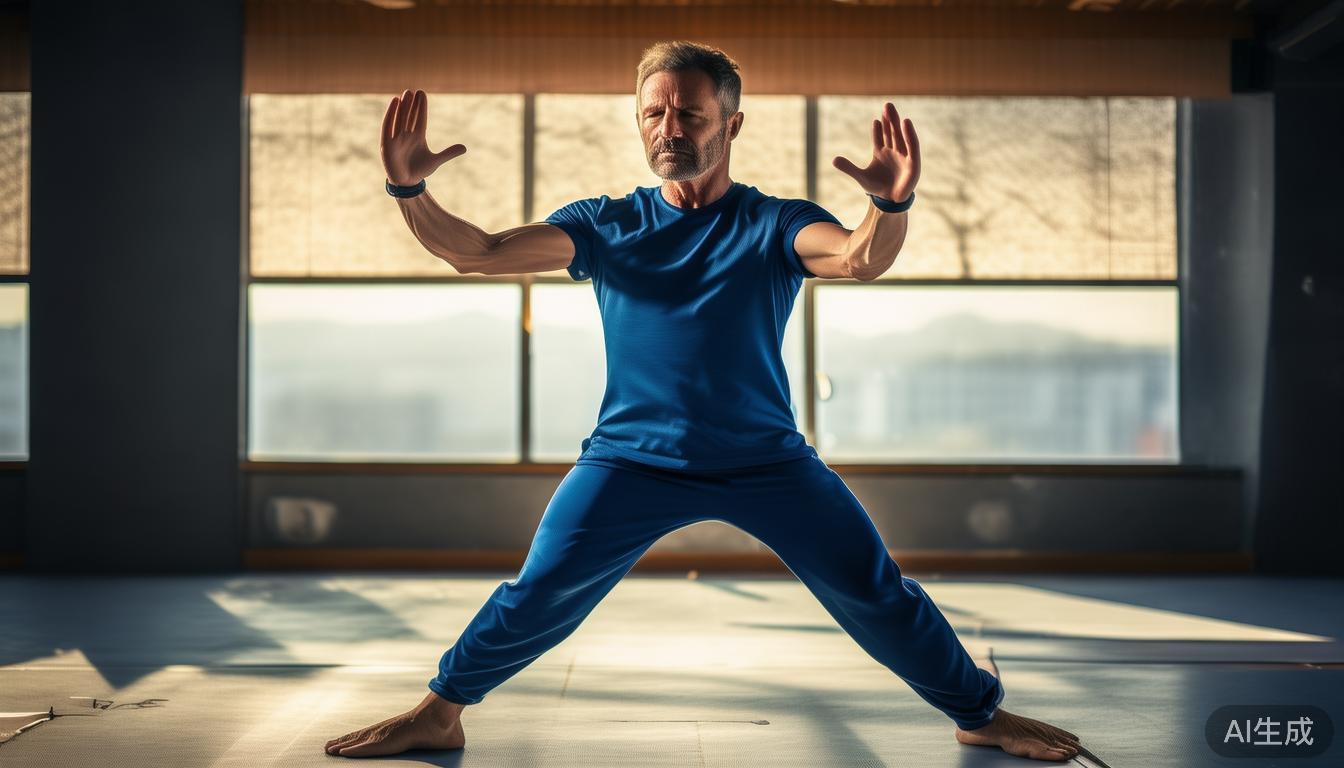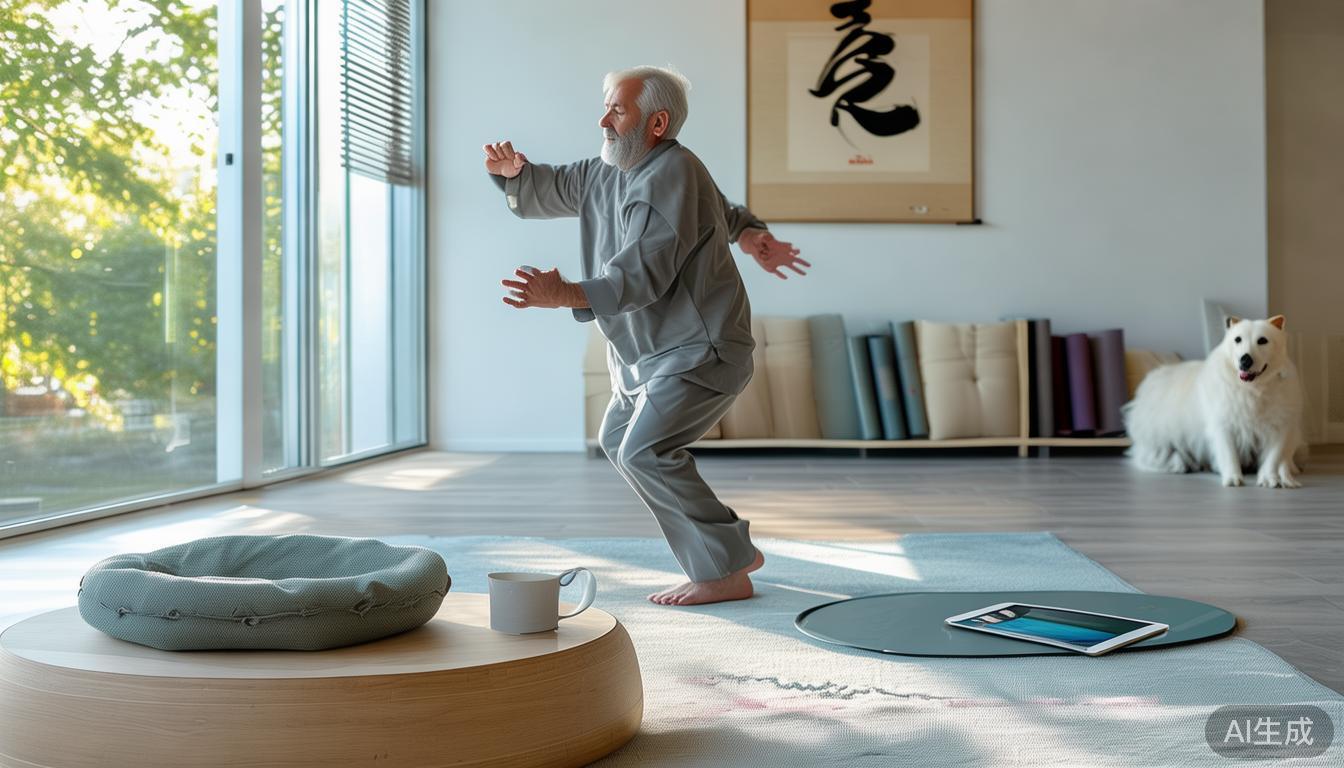Please read the last half of the sentence carefully, as its content may not be consistent with the objective truth, so please be aware.
How Tai Chi improves balance in the elderly
In Tai Chi practice, the movement of shifting the center of gravity has the property and function of effectively training the muscles of the lower limbs. Among them, when we change the moves, Tai Chi Lessons When the movement of the center of gravity of the body is controlled, the ankles, knees and hip joints will form a stable triangular support pattern. Among the many groups of students I have led and guided, there is an elder in his seventies who has experienced After three months of long practice training, I realized that I had to rely on climbing and leaning on the wall to walk forward to achieve the state from the beginning. Progress forward has occurred to the point where I am now able to walk alone. People can move up and down the stairs with independence, independence, and ease. The reason why such transformation and improvement can be achieved is due to the uniqueness, uniqueness, uniqueness and uniqueness of Tai Chi itself. Bend the knees and slow down. The posture of slowly falling and falling can not only enhance the endurance of the leg muscles, but at the same time, it can also increase the height and increase the sensitivity of the body's sensations.
During the exercise, the coordination of breathing is also very critical. Deep and long breathing can relax the sympathetic nerves, which in turn can reduce the stiffness of the limbs caused by tension. I often remind students to imagine that they are exercising in the water. Every movement needs to overcome the invisible resistance. Such kind of ideological guidance can activate the deep stabilizing muscles, thereby making the standing posture more stable. Many students have reported that after systematic exercise, the risk of tripping in daily life has been significantly reduced.
What kind of Tai Chi moves are suitable for beginners?

From the perspective of beginners, the simplified twenty-four postures will be more suitable for those who are about to enter the training threshold to choose and start training actions. Especially when this classic action "Cloud Hand" occurs, you can choose to practice by standing in the same position, using your arms to draw a larger circle or the range of the circle that can fit your own arm rotation. Practicing in this way can greatly reduce the burden on the knee joint, and also reduce it to the level where it can bear less load. I will always provide suggestions according to the situation. I suggest that people who have just joined this group of new students can choose to practice Yunshou alone in a step-by-step way to start the basic rhythm learning journey. After persisting in this behavior for about ten minutes every day and implementing it, you will soon notice the effect of the shoulders and cervical spine gradually relaxing from the initial tense state; this is related to the lack of enthusiasm due to feedback from the current tendency to lose a certain amount of perseverance or confidence in learning. In the case of the elderly group, through this gradual promotion method to choose and carry out learning activities, it can very well reduce or avoid the feedback of relatively low-level negative and frustrating emotional feelings. With its help, it can well help the elderly to maintain a state of initiative, inner hope and enthusiasm for learning.
"Catching the bird's tail" is a safe and easy-to-learn move, and "inverted hump curl" is also a safe and easy-to-learn move. When I teach, I will transform the traditional names into visual descriptions, such as comparing the inverted hump curl to slowly rewinding a picture scroll. The range of these movements can be adjusted according to personal circumstances. Sitting exercises are also effective. The key is to maintain the consistency of the movements, just like stringing pearls into a necklace, and each transition must be smooth and natural.
What safety precautions should you pay attention to when practicing Tai Chi?
The link that cannot be omitted includes warm-up preparation. When I lead students, I always do ten minutes of joint activation exercises, starting with ankle rotation and then performing neck relaxation in stages. For elderly beginners , such as those who sit for a long time, if such exercises are performed suddenly, it is very likely to cause waist muscle strain. It is recommended to wear knee pads during practice to provide additional support for the joints. As for summer mornings, it should be the best time to practice, because at this time the dew on the ground has dried and the temperature is very suitable.
Remember the principle of "add soreness and reduce pain": when the muscles show soreness, you can continue the activity, but when the joints hurt, you need to stop

How to incorporate Tai Chi into your daily life
Set your practice time after getting up in the morning or before your lunch break to form a memory of your biological clock. After many years of habit, I would do a set of Tai Chi after watering the flowers. Now as long as I pick up the kettle, my body will naturally enter a state of preparation. The corner of the living room can be set up as a fixed practice area, covered with non-slip mats, and a schematic diagram of moves hung up. These environmental cues can help build consistent practice habits.
It is a good idea to organize neighbors to set up training groups. In our community, there is an organization called the Morning Exercise Team. They do physical exercises together under the sweet-scented osmanthus tree every morning. After the exercise, they exchange experiences about health care. In this way, the interaction for the purpose of socialization not only increases the skills we master, but also alleviates the loneliness of the elderly who live alone. Tai Chi And Diabetes Courses Online , at certain moments, simple movement correction coupled with mutual communication can inspire more motivation to continue exercising than professional teaching and guidance.
When you first started practicing Tai Chi, what was the biggest challenge you encountered? Was it difficult to remember the movements, or was the flexibility range of the body blocked? You are welcome to tell your own experiences in the comment area. If you find these suggestions useful, please give it a like and support it, and share this article with more friends.


